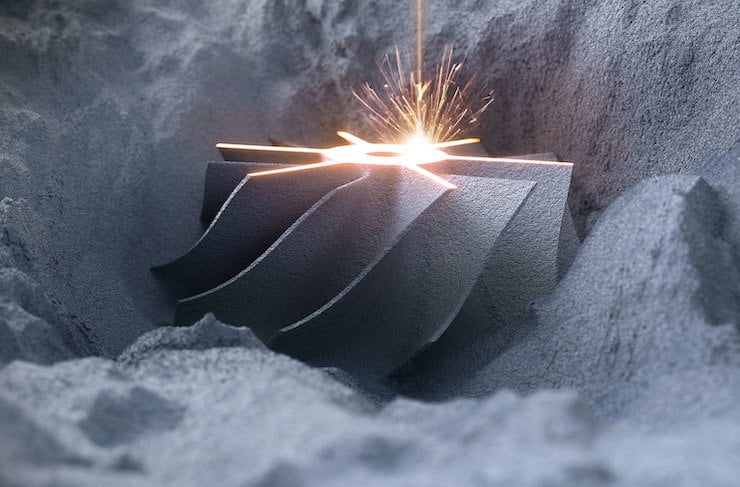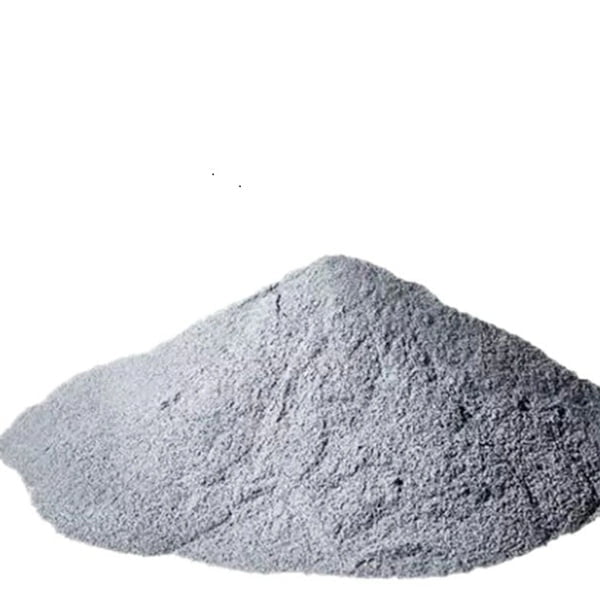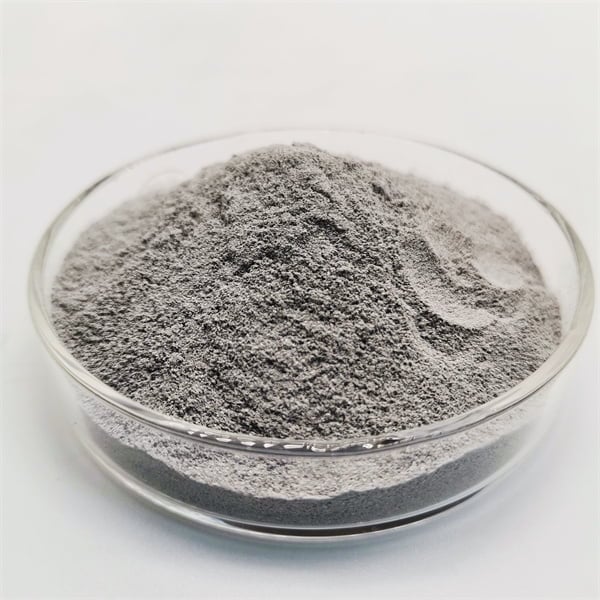Jämförelse mellan EBM och Binder Jetting
Innehållsförteckning
3D-printing fortsätter att utvecklas i en rasande takt och erbjuder spännande möjligheter att skapa komplexa metallföremål. Men med så många tekniker som konkurrerar om uppmärksamheten kan det vara en skrämmande uppgift att välja rätt för ditt projekt. Två framstående utmanare på denna arena är Electron Beam Melting (EBM) och Binder Jetting. Båda har imponerande egenskaper, men deras inre funktioner och idealiska tillämpningar skiljer sig avsevärt åt. Så spänn fast dig när vi fördjupar oss i den invecklade dansen mellan EBM och Binder Jetting och dissekerar deras material, tryckprocesser, styrkor och svagheter för att hjälpa dig att välja den perfekta matchningen för dina metalliska mästerverk.
Skillnaden i material mellan dessa två 3D-utskriftstekniker för metall
Föreställ dig att du bygger ett hus; kvaliteten på dina tegelstenar avgör hur robust den slutliga strukturen är. På samma sätt spelar materialvalet en avgörande roll vid 3D-utskrift av metall. Låt oss utforska de typer av metallpulver som är kompatibla med varje teknik:
EBM-kompatibla metallpulver:
| Metallpulver | Beskrivning |
|---|---|
| Titanlegeringar (Ti6Al4V, Gr23) | De är kända för sitt exceptionella förhållande mellan styrka och vikt, sin biokompatibilitet och sitt motstånd mot höga temperaturer, vilket gör dem idealiska för flyg- och rymdindustrin, medicinska implantat och högpresterande komponenter. |
| Superlegeringar av nickel (Inconel 625, Inconel 718) | Dessa mästare har oslagbar motståndskraft mot korrosion, oxidation och höga temperaturer, perfekt för delar till jetmotorer, turbiner och krävande olje- och gasapplikationer. |
| Koboltkrom (CoCrMo) | Ett biokompatibelt kraftpaket som ofta används i medicinska implantat som knä- och höftproteser tack vare sin utmärkta slitstyrka och korrosionstolerans. |
| Koppar (Cu) | Denna mycket ledande metall används i värmeväxlare, elektriska komponenter och till och med i konstnärliga skapelser tack vare sin unika rödaktiga nyans. |
| Rostfritt stål (316L) | Ett mångsidigt och kostnadseffektivt alternativ som erbjuder en bra balans mellan styrka, korrosionsbeständighet och prisvärdhet för olika industriella tillämpningar. |

Binder Jetting Kompatibla metallpulver:
| Metallpulver | Beskrivning |
|---|---|
| Rostfritt stål (17-4PH, 316L) | I likhet med EBM använder Binder Jetting olika rostfria stålkvaliteter som ger en blandning av styrka, korrosionsbeständighet och prisvärdhet för olika applikationer. |
| Verktygsstål (H13, M2) | Dessa stålpulver är formulerade för hög slitstyrka, vilket gör dem lämpliga för tillverkning av formar, matriser och skärverktyg. |
| Koppar (Cu) | Precis som EBM kan Binder Jetting använda kopparpulver och dra nytta av dess utmärkta termiska och elektriska ledningsförmåga för kylflänsar och elektriska komponenter. |
| Brons (CuSn6) | Brons är en legering av koppar och tenn och erbjuder en bra balans mellan styrka, slitstyrka och korrosionsbeständighet, vilket gör den lämplig för kugghjul, lager och konstnärliga tryck. |
| Inconel 625 | Binder Jetting är mindre vanligt än EBM, men kan också bearbeta Inconel 625 för applikationer som kräver exceptionell högtemperaturprestanda. |
Viktiga punkter att beakta:
- EBM har ett bredare utbud av högpresterande material som titan och nickel-superlegeringar, som passar krävande applikationer.
- Binder Jetting erbjuder ett bredare urval av prisvärda material som rostfritt stål och verktygsstål, vilket gör det kostnadseffektivt för specifika projekt.
- Båda teknikerna kan hantera koppar för dess ledande egenskaper, men EBM kan erbjuda finare pulverkontroll för komplicerade konstruktioner.
Showdown i tryckprocessen: EBM jämfört med Binder Jetting
Nu när vi har utforskat byggstenarna, låt oss se magin utvecklas! EBM och Binder Jetting använder fundamentalt olika metoder för att omvandla metallpulver till 3D-underverk.
EBM - En vals med högt vakuum:
Föreställ dig en balett som framförs i en ren, lufttom miljö. Det är själva kärnan i EBM. Processen utspelar sig i en vakuumkammare för att förhindra oxidation av metallpulvret. Här är en sammanställning av stegen:
- Pulveravsättning: Ett tunt lager metallpulver fördelas jämnt över byggplattformen.
- Elektronstråledans: En kraftfull elektronstråle skannar lagret och smälter selektivt pulverpartiklarna enligt den digitala designen. Den smälta metallen smälter samman och skapar ett fast skikt.
- Lager för lager: Denna minutiösa dans av pulverdeponering och smältning med elektronstråle upprepas och bygger upp objektet lager för lager tills det är färdigt.
Binder Jetting - en flytande symfoni:
Tänk dig en skicklig konstnär som minutiöst målar ett mästerverk. Binder Jetting använder en liknande princip, men med en robotiserad twist. Så här fungerar det:
- Spridning av pulver: Ett tunt lager metallpulver sprids jämnt över byggplattformen med hjälp av en blad- eller rullmekanism.
- Binder Inkjet Printing: Ett specialiserat bläckstrålehuvud applicerar selektivt ett flytande bindemedel på pulverbädden och fäster ihop partiklarna enligt den digitala designen. Till skillnad från EBM sker ingen smältning i det här skedet.
- Lager för lager: I likhet med EBM upprepas denna process med pulverspridning och bindemedelsstråle, varvid objektet byggs upp lager för lager.
Efterbearbetning: De sista detaljerna
Både EBM och Binder Jetting kräver ytterligare steg efter att tryckprocessen har slutförts. Här är vad som händer:
- EBM: Det tryckta objektet stannar kvar i vakuumkammaren, där det genomgår en kylningsprocess för att bibehålla sin strukturella integritet. Det kan också krävas att stödstrukturen avlägsnas och ytterligare efterbehandlingar beroende på tillämpningen.
- Binder Jetting: Det tryckta objektet tas ut ur byggkammaren och genomgår en avbindningsprocess för att avlägsna bindemedlet. Detta kan ske med termiska eller kemiska avbindningstekniker. Slutligen sintras objektet i en ugn, vilket innebär att det värms upp till en hög temperatur (men under smältpunkten) för att smälta samman metallpartiklarna och uppnå önskad styrka och densitet.
Viktiga punkter att beakta:
- EBM erbjuder en mer kontrollerad och exakt smältprocess, vilket leder till tätare och mer höghållfasta detaljer jämfört med Binder Jetting.
- Binder Jetting är i allmänhet snabbare än EBM på grund av det enklare, bläckstrålebaserade tillvägagångssättet. Efterbehandlingsstegen kan dock lägga till ytterligare tid till den övergripande processen.
- EBM kräver en vakuumkammare, vilket gör den till en mer komplex och dyr teknik jämfört med Binder Jetting.
Noggrannheten hos dessa två 3D-utskriftstekniker för metall är olika
Precis som en målares penseldrag avgör detaljerna i en målning, påverkar utskriftsprocessen avsevärt noggrannheten hos det slutliga 3D-utskrivna objektet. Här är en uppdelning av vad du kan förvänta dig:
- EBM: På grund av den exakta karaktären hos smältprocessen med elektronstråle, EBM erbjuder generellt högre måttnoggrannhet och finare ytfinish jämfört med Binder Jetting. Detta gör den idealisk för applikationer som kräver invecklade detaljer och snäva toleranser.
- Binder Jetting: Upplösningen i bindemedelssprutningsprocessen kan vara något lägre än EBM, vilket kan leda till grövre ytfinish och något större dimensionsvariationer. Den tekniska utvecklingen gör dock att noggrannheten i Binder Jetting ständigt förbättras.
Viktiga punkter att beakta:
- För detaljer som kräver exceptionell detaljrikedom och snäva toleranser är EBM det bästa alternativet.
- Binder Jetting kan fortfarande uppnå god noggrannhet för många applikationer, särskilt när detaljernas komplexitet inte är ett stort problem. Kostnadseffektiviteten för Binder Jetting kan uppväga små begränsningar i noggrannhet för vissa projekt.
Utrustningen för dessa två 3D-utskriftstekniker för metall är olika
Hårdvaran bakom varje teknik spelar en avgörande roll för dess möjligheter och begränsningar. Låt oss fördjupa oss i skillnaderna i utrustning:
- EBM Systems: Det är komplexa maskiner med högeffektiva elektronstrålekanoner, vakuumkammare och sofistikerade kontrollsystem för lager-för-lager. Kostnaden för EBM-maskiner är vanligtvis högre på grund av deras avancerade teknik.
- System för sprutning av bindemedel: Dessa system är i allmänhet mindre komplexa än EBM-maskiner. De använder bläckstråletryckteknik och ugnsintegrering för avbindning och sintring. Kostnaden för Binder Jetting-maskiner kan vara lägre jämfört med EBM.
Viktiga punkter att beakta:
- Den högre kostnaden för EBM-utrustning innebär potentiellt högre tryckkostnader per detalj jämfört med Binder Jetting.
- Den enklare karaktären hos Binder Jetting-system kan göra dem mer tillgängliga för ett bredare spektrum av användare.

För- och nackdelar med EBM och Binder Jetting
Nu när vi har dissekerat de olika teknikernas inre funktioner, låt oss sammanfatta deras styrkor och svagheter för att hjälpa dig att fatta ett välgrundat beslut:
EBM
Fördelar:
- Utmärkt måttnoggrannhet och ytfinhet
- Hög densitet och starka delar
- Brett utbud av högpresterande material
- Idealisk för komplexa geometrier och invecklade detaljer
Nackdelar:
- Höga kostnader för utrustning och tryckning
- Begränsat materialutbud jämfört med Binder Jetting i vissa kategorier (t.ex. prisvärda alternativ)
- Långsammare utskriftshastighet jämfört med Binder Jetting
Binder Jetting
Fördelar:
- Snabbare utskriftshastighet
- Mer överkomliga kostnader för utrustning och tryckning
- Större urval av material, inklusive kostnadseffektiva alternativ
- Lämplig för produktion av stora volymer
Nackdelar:
- Något lägre måttnoggrannhet och ytfinhet jämfört med EBM
- Materialegenskaperna kanske inte är lika högpresterande som EBM för vissa material
- Efterbehandlingssteg ökar komplexiteten
Att välja rätt teknik: En balansgång
Att välja den perfekta 3D-utskriftstekniken för metall för ditt projekt beror på en noggrann övervägning av dina prioriteringar. Här är ett ramverk för att vägleda dig i ditt beslut:
Prioritera högpresterande delar med exceptionell noggrannhet och detaljrikedom: Om ditt projekt kräver förstklassiga mekaniska egenskaper, invecklade funktioner och snäva toleranser, är EBM en mästare. Tillämpningar som flyg- och rymdkomponenter, medicinska implantat och högpresterande formar skulle ha stor nytta av EBM:s styrkor.
Kostnaden är ett stort bekymmer: För projekt där prisvärdhet är av största vikt framstår Binder Jetting som det mer budgetvänliga alternativet. De lägre utrustnings- och tryckkostnaderna, i kombination med ett bredare urval av kostnadseffektiva material, gör Binder Jetting till ett attraktivt val för prototyper, funktionella delar med måttliga påfrestningar och applikationer där stora volymer behövs.
Snabbhet är av yttersta vikt: När tiden är en kritisk faktor kan den snabbare utskriftshastigheten hos Binder Jetting förändra spelplanen. Denna teknik är idealisk för projekt med snäva tidsramar eller behov av snabb prototyptillverkning.
Materialvalet är avgörande: Tänk på vilka specifika egenskaper som krävs för ditt projekt. Om högpresterande material som titanlegeringar eller nickel-superlegeringar är nödvändiga, erbjuder EBM ett bredare utbud av alternativ i den kategorin. Binder Jetting erbjuder dock ett bredare urval överlag, inklusive verktygsstål och bronser, som kan vara lämpliga beroende på tillämpningen.
Delarnas komplexitet har betydelse: EBM utmärker sig genom att skapa intrikata geometrier med exceptionell detaljrikedom tack vare den exakta elektronstrålesmältningsprocessen. Om din design har komplexa funktioner och snäva interna kanaler, EBM kan vara det bättre valet. Binder Jetting kan dock fortfarande hantera måttligt komplexa geometrier för många applikationer.
Tänk på efterbearbetning: Båda teknikerna kräver ytterligare steg efter tryckningen, men EBM:s efterbearbetning kan vara enklare eftersom det inte finns något avbindningssteg. Binder Jetings avbindnings- och sintringssteg ökar dock komplexiteten, men kan vara en värdefull avvägning mot bakgrund av de potentiella kostnadsbesparingarna.
Exempel i handling: Att omsätta teori i praktik
Låt oss illustrera beslutsprocessen med verkliga scenarier:
- Scenario 1: Ett lättviktsfäste för flygplan
Tänk dig att du ska konstruera ett lättviktsfäste till en flygplansvinge. Styrka, viktreducering och invecklade detaljer för spänningsfördelning är av största vikt. I det här fallet skulle EBM:s förmåga att hantera högpresterande material som titanlegeringar (kända för sitt exceptionella förhållande mellan styrka och vikt) och producera detaljer med utmärkt noggrannhet göra företaget till det perfekta valet.
- Scenario 2: Snabb prototyptillverkning av en verktygsinsats
Du håller på att ta fram en ny prototyp för en verktygsinsats och behöver en snabb handläggningstid. Även om den slutliga insatsen kan bearbetas av högvärdigt stål, gör Binder Jetting-teknikens snabbhet och prisvärdhet att den passar perfekt för att skapa en funktionell prototyp för inledande tester. Binder Jetings förmåga att hantera pulver av verktygsstål gör det möjligt att skapa materialegenskaper som är relevanta för den slutliga applikationen.

VANLIGA FRÅGOR
Fråga: Vilken teknik är miljövänlig?
Både EBM och Binder Jetting kan vara miljövänliga jämfört med traditionella tillverkningstekniker. EBM arbetar i en vakuumkammare, vilket minimerar utsläpp och avfall. Binder Jetting använder metallpulver, och en betydande del av det oanvända pulvret kan ofta återvinnas för framtida användning, beroende på materialet och det specifika systemet. Energiförbrukningen för båda processerna bör dock beaktas.
F: Kan jag skriva ut färgglada delar med 3D-utskrift i metall?
Även om nuvarande 3D-printingteknik för metall inte direkt printar flerfärgade delar, kan efterbehandlingstekniker som anodisering eller plätering användas för att uppnå en önskad färgestetik på den printade metallen.
F: Vilka är säkerhetsaspekterna för 3D-utskrifter i metall?
3D-utskrifter i metall kan innebära arbete med fina metallpulver, som kan vara farliga vid inandning. Läs alltid säkerhetsdatabladet (SDS) för det specifika metallpulver du använder och följ de rekommenderade säkerhetsåtgärderna, som kan omfatta användning av lämplig personlig skyddsutrustning (PPE), t.ex. handskar, andningsskydd och skyddsglasögon. EBM-system använder dessutom högeffektiva elektronstrålar, och det är viktigt med lämplig utbildning och säkerhetsprotokoll vid användning av sådan utrustning.
Sammanfattningsvis: Avtäckning av metallunderverken
EBM och Binder Jetting, även om de skiljer sig åt i sina tillvägagångssätt, utgör kraftfulla verktyg i 3D-utskriftslandskapet för metall. Genom att förstå deras materialegenskaper, utskriftsprocesser, styrkor och begränsningar kan du fatta ett välgrundat beslut om att frigöra potentialen hos dessa metallunderverk för ditt nästa projekt. Kom ihåg att den perfekta tekniken beror på dina specifika prioriteringar - en balansgång mellan prestanda, budget, hastighet och materialkrav. Så släpp loss din kreativitet, omfamna möjligheterna med 3D-utskrift i metall och förvandla din vision till ett konkret mästerverk!
Dela på
MET3DP Technology Co, LTD är en ledande leverantör av lösningar för additiv tillverkning med huvudkontor i Qingdao, Kina. Vårt företag är specialiserat på 3D-utskriftsutrustning och högpresterande metallpulver för industriella tillämpningar.
Förfrågan för att få bästa pris och anpassad lösning för ditt företag!
Relaterade artiklar

Högpresterande segment för munstycksvingar: Revolutionerande turbineffektivitet med 3D-utskrift i metall
Läs mer "Om Met3DP
Senaste uppdateringen
Vår produkt
KONTAKTA OSS
Har du några frågor? Skicka oss meddelande nu! Vi kommer att betjäna din begäran med ett helt team efter att ha fått ditt meddelande.

Metallpulver för 3D-printing och additiv tillverkning
FÖRETAG
PRODUKT
cONTACT INFO
- Qingdao City, Shandong, Kina
- [email protected]
- [email protected]
- +86 19116340731
















